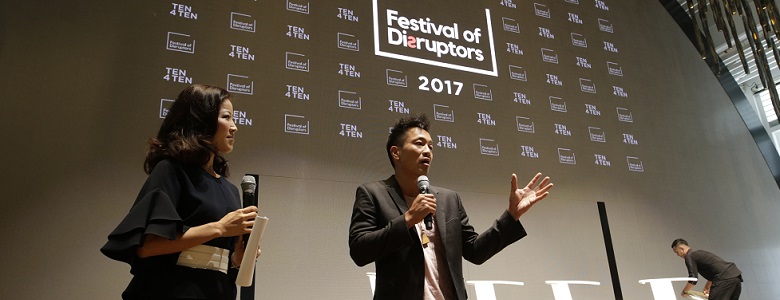With data and cellphones, the next tech disruptor is the man on the street
- Disruption is not new: almost a thousand years ago, Genghis Khan changed the course of history with innovative ideas that culminated in the world’s largest-ever contiguous empire
- Today, digital technology is disrupting the world by enabling millions of people to collectively contribute data to solve problems
- Technology is also set to transform individual lives by becoming affordable to anyone who needs it
On a sunny day in 2016, Dr Albert Lin was out enjoying a round of fishing and a barbecue with his kids. But before the day was out, disaster struck. He lost his right leg in a car accident.
“That evening I sat in my hospital bed wondering if my life as I knew it was over. I was an explorer, I was a surfer, I was a climber, and all of a sudden I’d lost my mobility,” said Dr Lin, who is a National Geographic Explorer and a research scientist at the University of California San Diego.
But that moment of despair quickly faded, he told the audience at the Festival of Disruptors, held in Singapore on 6 November 2017. Soon after the accident he was walking, running and surfing again—with the help of technology. He proudly showed his bionic leg to the audience and quipped that he was now “part-robot”.
The inaugural Festival was organised by local crowdfunding site Gofiee and Sydney-based media owner Sundance Company, with GovTech as one of its supporters. Dr Lin, who gave the keynote speech, laid out how novel applications of technology have the potential to transform not only individual lives, but also society at large.
The problem of prosthetics
There are some 40 million amputees worldwide, and many do not have access to good prosthetics, said Dr Lin.
“Prosthetics cost so much money because they have to fit exactly. People in the streets are begging for money because they had the exact same thing happen to them, but they couldn’t afford what I had,” he said. “It’s the difference between being productive and having to depend on somebody else for everything you do.”
Dr Lin is trying to make inexpensive prosthetic limbs possible by putting cutting-edge 3D mapping technology—normally reserved for archaeological research—on the ubiquitous smartphone. He was inspired by one of his earlier expeditions, on which he surveyed ancient Mayan temples in the jungles of Guatemala.
If he can get his idea to work, almost anyone could use a smartphone to accurately scan the part of their body requiring a prosthetic limb, and send the data to a 3D printer for a brand new body part, he said.
Technology and the might of millions
Just as technology can help the masses, so too can the masses help technology. Shortly after the 2014 disappearance of Malaysia Airlines flight MH370, a company co-founded by Dr Lin launched a campaign asking internet users to scour satellite images for signs of the wreckage; eight million people pitched in. “Imagine eight million people working together for your company—that’s the future of our human potential,” he said.
The company, Tomnod, which in Mongolian means ‘big eye’, was a spin-off from Dr Lin’s high-profile search for the tomb of Genghis Khan in the remote highlands of Mongolia. In 2010, he launched an online portal for people to identify features that interested them in satellite images covering thousands of square kilometres of Mongolian desert.
Although his team could not conclusively locate the tomb, the crowdsourced data pointed them to a mountaintop where they found artifacts from the time of Khan’s death. “We can take the power of every single mind and combine it in this modern digital age… Every single dot on that map was created by an individual, a person saying ‘there’s something in that data’,” said Dr Lin. “You put all that together and you start to see trends and get insights.”
Why this desire to find a person who died almost a thousand years ago? “I think [Khan] was really the ultimate disruptor. In a single lifetime, he created the largest empire in human history, one which today still affects all of us,” said Dr Lin. “And it was through innovation that he was able to do so.”
An extension of yourself
Dr Lin’s work doesn’t stop there. In 2014, he co-founded a science education company, Planet3—named for the third planet from the sun—that combines cutting-edge curriculum crowdsourced from scientists with state-of-the-art multimedia created by the best video game designers.
“If you can figure out how to take the concept of crowdsourcing and apply it to video games, maybe we can change how we educate that critical generation of people who will define not only the next 50 years, but possibly the next 10,000,” he said.
Turbocharging this digital transformation is something most people take for granted today—the cellphone, which appears as a common enabler throughout Dr Lin’s work.
“This isn’t just a device, it’s a prosthetic—an extension of yourself, connecting you to the world,” said Dr Lin. “The cellphone turns you into the best sensor network that has ever existed… the largest scientific force that has ever walked this planet.”
https://www.tech.gov.sg/media/technews/with-data-and-cellphones-the-next-tech-disruptor-is-the-man-on-the-street

